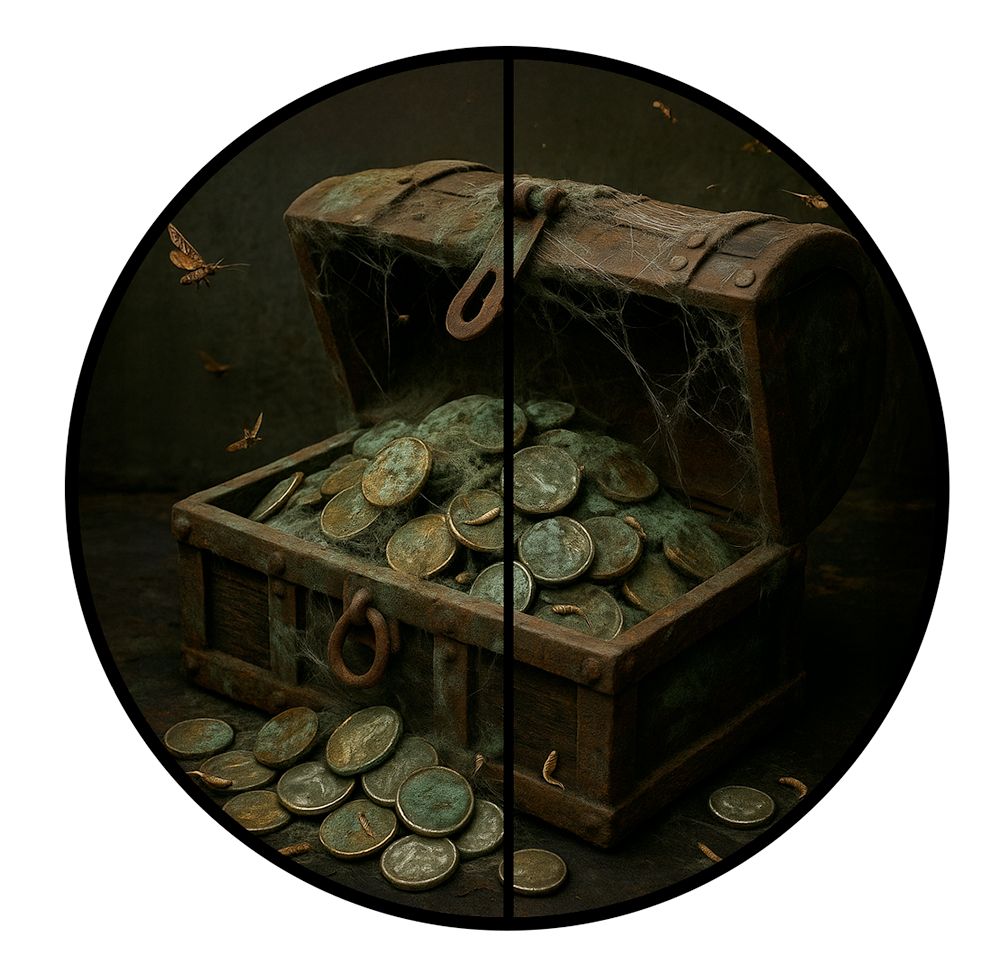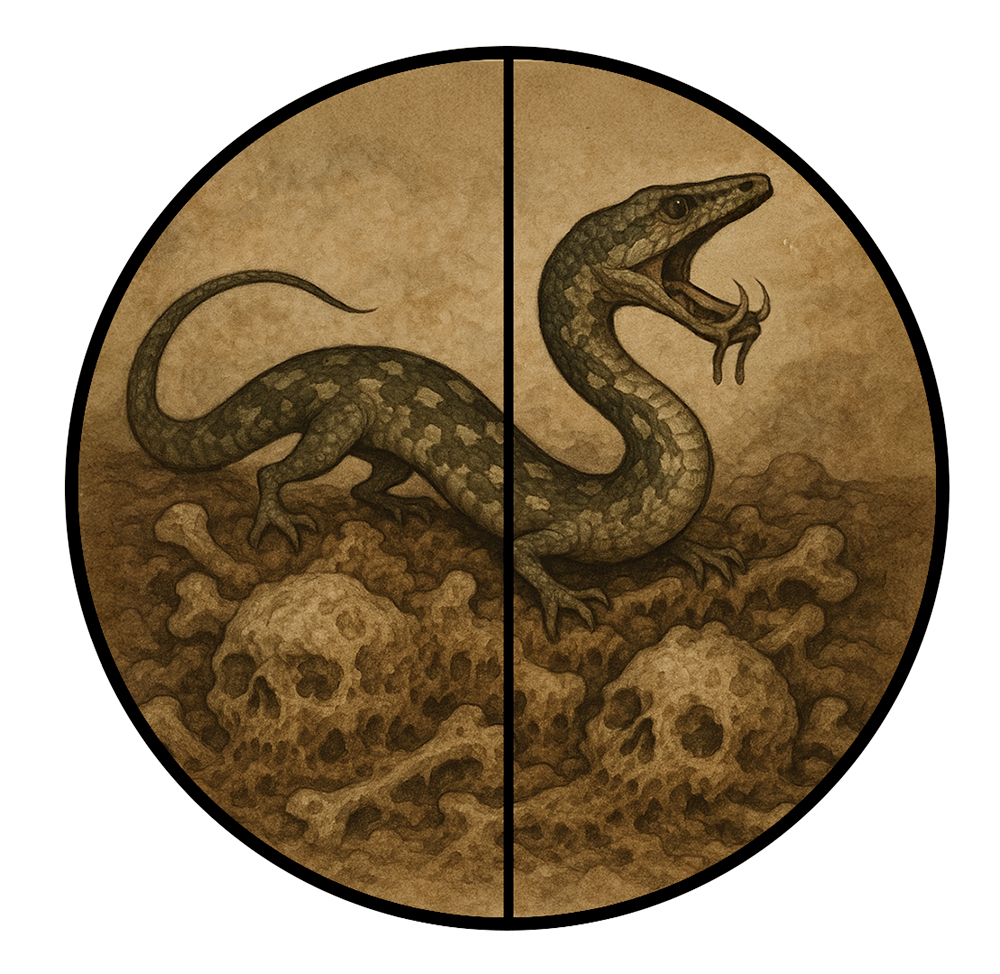 James 5:2
James 5:2

|
Strongs 3588
[list] Λογεῖον Perseus ho ὁ the Art-NMS |
|
Strongs 4149
[list] Λογεῖον Perseus ploutos πλοῦτος wealth N-NMS |
|
Strongs 4771
[list] Λογεῖον Perseus hymōn ὑμῶν of yourselves PPro-G2P |
|
Strongs 4595
[list] Λογεῖον Perseus sesēpen σέσηπεν has been putrefied V-RIA-3S |
|
Strongs 2532
[list] Λογεῖον Perseus kai καὶ and Conj |
|
Strongs 3588
[list] Λογεῖον Perseus ta τὰ the Art-NNP |
|
Strongs 2440
[list] Λογεῖον Perseus himatia ἱμάτια garments N-NNP |
|
Strongs 4771
[list] Λογεῖον Perseus hymōn ὑμῶν of yourselves PPro-G2P |
|
Strongs 4598
[list] Λογεῖον Perseus sētobrōta σητόβρωτα moth-eaten Adj-NNP |
|
Strongs 1096
[list] Λογεῖον Perseus gegonen γέγονεν has become V-RIA-3S |


Lucan describes the fate of a Roman soldier bitten by a Seps in Book IX of Pharsalia. The soldier, Sabellus, suffers a gruesome death after a Seps, a small but deadly serpent, bites him. Lines 897–920 summarizing the event:
Sabellus is bitten by a Seps, which he tears from his skin and kills with a javelin. Despite its small size, the serpent's venom is extraordinarily potent. The poison rapidly dissolves the flesh around the wound, exposing the bone. His limbs, muscles, and vital organs liquefy into a bloody, black discharge, and his entire body melts into a formless mass. Lucan vividly describes how the venom destroys the body's structure, leaving no trace of bones or tissue, as if consumed entirely by the poison. This death is portrayed as one of the most horrific caused by the Libyan serpents, highlighting the Seps' unique and devastating effect. This account emphasizes the terrifying power of the Seps, which Lucan notes surpasses other African snakes in its destructive capability, as it not only kills but obliterates the victim's physical form (lines 925–927).
Your riches have become corrupted, and your garments have been moth eaten;
Your riches have rotted, and your garments have become moth-eaten.
Footnotes
| 6 | Jam 5:2 σέτοβρωτος is a compound construct word unique to the NT. σής + βιβρώσκω follows the Hebrew of Job כבגד אכלו עש meaning, "as an outer covering he devoured himself, a moth-worm." (Job 13:28) The word "σής" (sēs) has a Hebrew origin: Hebrew סָס, sas Isaiah 51:8 see Strongs #5580. Primary Meaning: Moth.
Metaphorical: Refers to "bookworms" or "grammarians."
It goes without saying that the NT uses symbolic language. What is a moth? A bookworm that attacks books and becomes a (nocturnal) winged insect. See Logeion for more info.
|